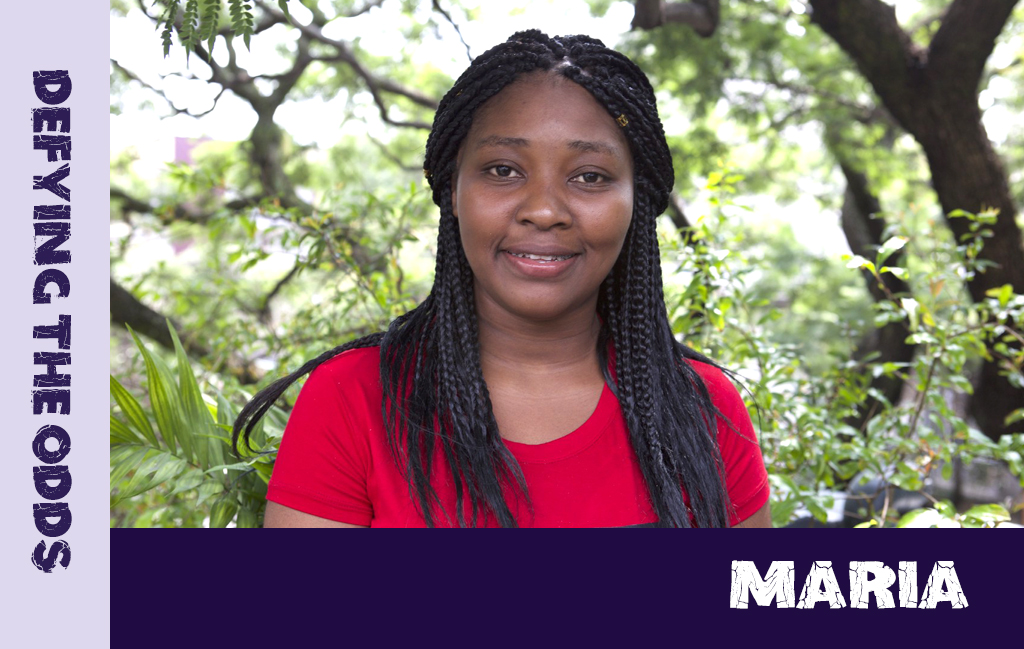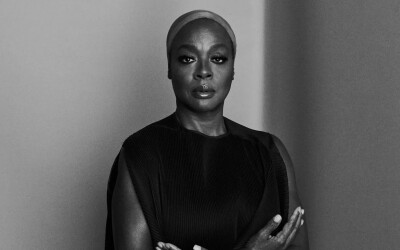Displaced but not defeated, María is determined to raise awareness of displaced people.
“How long are we going to be moving from one place to another?” María remembers asking her mom, Yolanda. She and her siblings lived in gang-infested settlements, informal shelters, and overcrowded rooms, sometimes forced to relocate as often as every few days. Food shortages were common. At one point, María shared two small bathrooms with 750 other people.
María’s story is not unique. She is one of 7.2 million people displaced by Colombia’s civil conflict.
Today, she is 23 and still determined to raise awareness about the journey of displaced people. “I want them to keep in mind how displaced people live. How displaced people struggle to push forward. And that they may learn many stories, like mine,” she says.
María grew up in the “very beautiful” Iscuandé, Nariño, Colombia. “There you didn’t worry about starving. You didn’t worry about getting work because you worked for yourself,” she said of life on her family’s farm. When María was just a girl, guerilla fighters killed her father over a land dispute with a neighbor. Fearing for their safety, Yolanda took her children and escaped that night, braving a 10-hour boat ride to get to Cali.
For more than 52 years, Colombia’s civil conflict raged between the army, paramilitary, guerrilla groups and drug cartels. The fighting — the longest in Latin American history — displaced significant portions of the country’s youth, leading to high dropout rates. Schools were also used by armed groups as recruiting centers for child soldiers and covert military bases.
After the death of her father, María and her family resettled in the slums of Cali. While living in tents made of plastic and wood, she feared for her safety: “I know that it could catch fire anytime or a knife could cut through and my life was at risk, my brother’s and my mom’s.”
Education and her after-school activities — theater, dance and songwriting — kept María strong when her emotions threatened to overwhelm her. She showcases these moments of happiness in “Displaced but not Defeated” while she dances with her sisters and performs a play with her mother. “Together we have a lot of fun and joy,” she says of her family life.
In the documentary, 16-year-old María says that she has many dreams: “First of all to finish my studies. Then attend university… Five years from now I want to be a professional, who speaks English fluently… to be someone acknowledged.”
But poverty prevented her from going to university. After María completed her secondary education, she became a nail technician in order to support her family. She hopes to one day get her degree in communications or social work. “I want to set a good example for my younger brother. I want to show him that you can get ahead by being a good person and having an honest job, that you don’t need to join a gang to succeed,” she says.
Girls across Colombia face barriers to their education like María. Of the 11.2 million children in Colombia between ages five and 17, an estimated one million worked outside the home. 80% of Colombia’s displaced population lives in conditions of poverty.
María wants to share her experience as a displaced person. She also hopes the Colombian government will do more to support girls’ education: “I want to stress the need for girls to be encouraged to be confident. Too many girls in my country are not respected and admired as they should be. The country needs to start encouraging all girls to be going to school.” At age 23, María has faced many obstacles, but her determination and perseverance ensure that she will never be defeated.
Source malala.org



